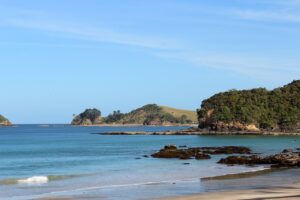Submission on Draft Regional Plan for Northland
23 September 2016
Northland Regional Council
Private Bag 9021
Whangarei Mail Centre
Whangarei 0148
Submission on Draft Regional Plan for Northland
Submission
1. The Soil & Health Association of New Zealand Inc. (“Soil & Health”) makes this submission on the Draft Regional Plan for Northland (“Draft Plan”) requesting that it include policies and provisions relating to the management of genetically modified organisms (“GMOs”), as allowed under the Resource Management Act 1991 and pursuant to the ruling in Federated Farmers of New Zealand v Northland Regional Council.[1] This submission relates to the Coastal Marine Area, Soil & Water and tangata whenua sections of the Draft Plan.
Reasons
The Law
- Soil & Health was a party to Federated Farmers of New Zealand v Northland Regional Council.
- That decision ruled that local councils have the power under the Resource Management Act 1991 (“RMA”) to control the use of GMOs via their regional planning instruments.
- That decision has recently been upheld by the High Court.[2]
- Soil & Health therefore considers that there is jurisdiction for Northland Regional Council (“the Council”) to make provision for objectives, policies, rules and other planning tools in relation to GMOs under the Draft Plan.
Integrated Management
- GMO proposals require approval from the Environmental Protection Authority (“EPA”) under the Hazardous Substances and New Organisms Act 1996 (“HSNO Act”).
- The HSNO Act consenting process gives particular attention to the technical aspects of managing individual proposals. However, it does not involve:
- consideration of the geographic distribution of GMO projects;
- consideration of the need to geographically protect areas of particular value from GMO activities, such as sensitive farming practices (e.g. organic farming);
- consideration of the preferences of a community; or
- integration of the management of natural and physical resources, and the effects of GMO activities on natural and physical resources, on a geographic basis.
- The HSNO Act does not, therefore, provide a planning framework through which GMOs can be geographically / spatially managed in an integrated manner.
- The RMA establishes a regime whereby local authorities are called upon to prepare policy and plans to implement sustainable management on a geographic basis through the use of integrated management of natural and physical resources at a regional level, and integrated management of effects on the environment at a district level.
- Consideration of the location and distribution of proposals involving GMOs on a district basis, together with protection of rural resources for organic or biodynamic farming, are important resource management matters for consideration by territorial authorities in carrying out their functions under the RMA.
Potential Adverse Effects
- The outdoor use of GMOs has a potential to cause significant adverse effects on the environment. Adverse effects could include (inter alia):
- biological or ecosystem harm;
- harm to other existing or potential forms of land use including:
- organic farming (including organic certification and the requirement to be GMO free); and
- agricultural activities dependent on an uncontaminated environmental brand.
- GMOs have the potential to adversely affect ecological, economic, and resource management values, and the social and cultural well being of people, communities and tangata whenua.
- Application of integrated management and a precautionary approach to GMOs under the RMA is the best available technique for managing the potential adverse effects posed by GMOs within the region.
Sustainable Management and Part II
- It is consistent with the sustainable management purpose and Part II of the RMA to establish regional plan provisions (e.g. issues, objectives, policies, rules and methods) that manage the release, location and management of GMOs where they have the potential to adversely affect other land use activities.
Decision Sought
- The decision Soil & Health seeks from the Council is that the Draft Plan be amended to include the following policies:
- To include GMO provisions in the ‘Tangata whenua’ section of the Draft Plan.
- To include GMO provisions in the ‘Coastal space’ and ‘Coastal works’ sections of the Draft Plan that are the same as in the Auckland Unitary Plan, that being to adopt a precautionary approach to the management of GMOs by:
- prohibiting the outdoor release of a GMO in the Coastal space
- making outdoor field-testing a discretionary activity in the Coastal space; and
- including performance standards in regard to liability and the posting of bonds.
- To include GMO provisions in the ‘Land & water’ and the ‘Discharges to land and water’ sections of the Draft Plan that avoids toxic discharges to land & water from GMOs, thereby avoiding transgenic contamination of soils & waterways.
- To adopt a resource management framework for the management of GMOs that is Regional specific taking into account environmental, economic and social well-being considerations.
- Soil & Health considers that it is important that there is consistency between the Auckland Unitary Plan and the Regional Plan for Northland, thereby eliminating cross boundary issues.
- Soil & Health wishes to be heard in support of our submission.
Yours sincerely
Name: Mischa Davis
Position: Policy Advisor
The Soil & Health Association
PO Box 340002
Birkenhead
Auckland 0746
Phone: 06 8775534
Mobile: 0212667754
Email: advocacy@organicnz.org.nz
Website: www.organicnz.org.nz
[1] Federated Farmers of New Zealand v Northland Regional Council [2015] NZEnvC 89.
[2] Federated Farmers of New Zealand v Northland Regional Council [2016] NZHC 2036.

